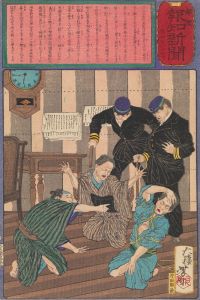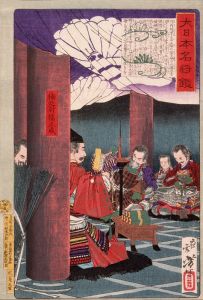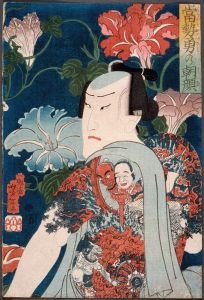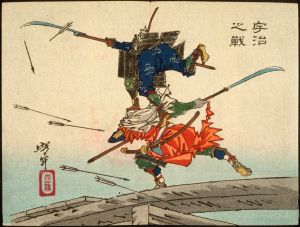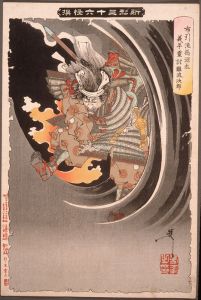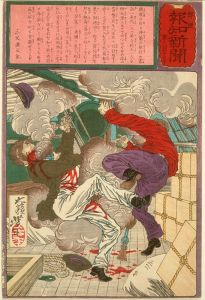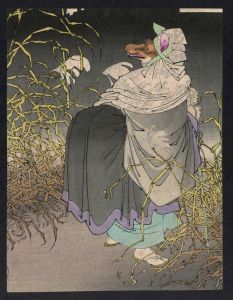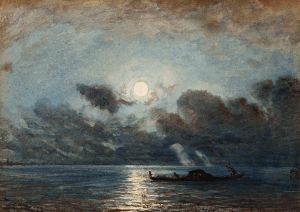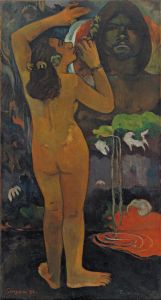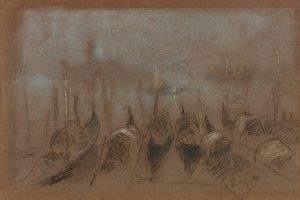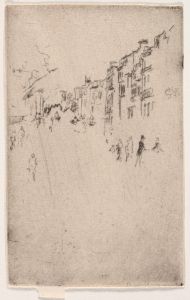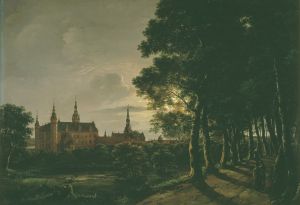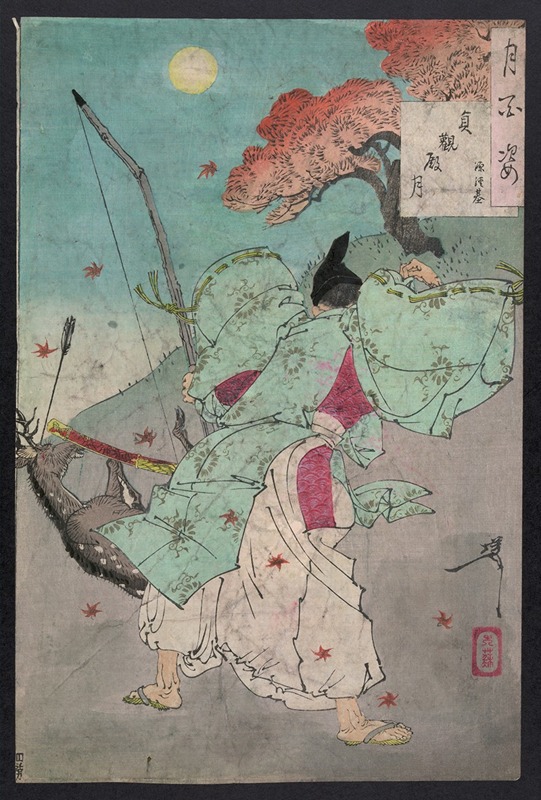
Jōganden no tsuki
A hand-painted replica of Tsukioka Yoshitoshi’s masterpiece Jōganden no tsuki, meticulously crafted by professional artists to capture the true essence of the original. Each piece is created with museum-quality canvas and rare mineral pigments, carefully painted by experienced artists with delicate brushstrokes and rich, layered colors to perfectly recreate the texture of the original artwork. Unlike machine-printed reproductions, this hand-painted version brings the painting to life, infused with the artist’s emotions and skill in every stroke. Whether for personal collection or home decoration, it instantly elevates the artistic atmosphere of any space.
"Jōganden no tsuki" (The Moon at Jōganden) is a woodblock print by the renowned Japanese artist Tsukioka Yoshitoshi, a prominent figure in the ukiyo-e genre during the late Edo and early Meiji periods. Yoshitoshi is celebrated for his innovative approach to traditional woodblock printing, and his works often explore themes of beauty, violence, and the supernatural, reflecting the tumultuous changes in Japanese society during his lifetime.
This particular print is part of Yoshitoshi's acclaimed series "One Hundred Aspects of the Moon" (Tsuki hyakushi), which he produced between 1885 and 1892. The series consists of 100 prints, each depicting a scene inspired by Japanese and Chinese history, literature, and folklore, all unified by the presence of the moon. "Jōganden no tsuki" is one of these prints, showcasing Yoshitoshi's masterful use of color, composition, and narrative.
The print "Jōganden no tsuki" specifically illustrates a scene involving the famous historical figure, Abe no Nakamaro, a Japanese scholar and poet of the Nara period. Abe no Nakamaro was sent to China as part of a Japanese mission to the Tang dynasty and became a prominent official there. The print captures a poignant moment from his life, reflecting his longing for Japan while gazing at the moon from Jōganden, a palace in China.
Yoshitoshi's depiction of Abe no Nakamaro is both evocative and melancholic, capturing the emotional depth of the scholar's homesickness and his connection to the moon as a symbol of distant home and unfulfilled desires. The moon, a recurring motif in Yoshitoshi's work, serves as a bridge between the earthly and the ethereal, enhancing the emotional resonance of the scene.
The technical execution of "Jōganden no tsuki" demonstrates Yoshitoshi's skillful use of line and color to create a harmonious and atmospheric composition. The delicate gradations of color and the intricate details of the landscape and figures reflect the influence of Western art techniques, which were becoming increasingly popular in Japan during the Meiji era. Yoshitoshi's ability to blend traditional Japanese aesthetics with these new influences is evident in the print's dynamic yet balanced design.
Yoshitoshi's "One Hundred Aspects of the Moon" series, including "Jōganden no tsuki," is considered one of his masterpieces, showcasing his artistic maturity and the culmination of his career. The series remains highly regarded for its innovative approach to storytelling through visual art and its profound exploration of human emotions and experiences.
"Jōganden no tsuki" is a testament to Yoshitoshi's enduring legacy as one of Japan's last great ukiyo-e masters, whose work continues to be celebrated for its beauty, depth, and historical significance.






